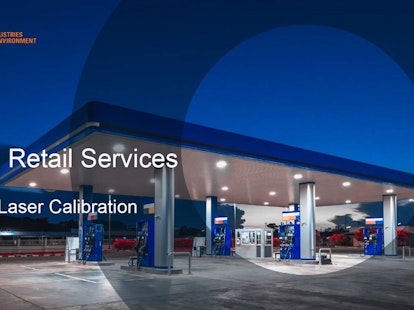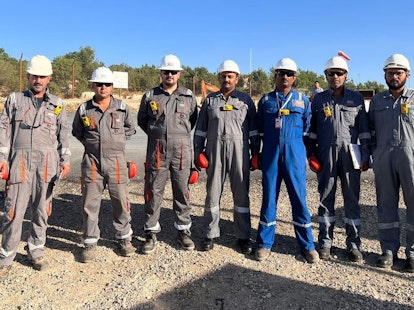Welding plays a vital role in the fabrication and maintenance of infrastructure within the oil and gas industry. As technology evolves, so do welding techniques, offering increased productivity, precision, and safety.
In this article, Govind Tiwari, PhD, Quality Specialist Welding Engineer at Qatar Energy LNG, explores the applications of manual welding, semi-automatic welding, and automatic welding in the oil and gas sector, highlighting their respective benefits and challenges.
Manual Welding (SMAW, GTAW)
Manual welding, often referred to as traditional welding, involves skilled welders, manually manipulating the welding torch and filler metal to join metal components. While manual welding requires a high level of expertise, it remains widely used in the oil and gas industry for various applications, including piping, tanks, structural and pipeline construction, repairs, and maintenance.
Applications:
- Piping Welding: Manual welding techniques are exercised to weld all the grades of piping materials.
- Pipeline Welding: Manual welding techniques such as Shielded Metal Arc Welding (SMAW) or Gas Tungsten Arc Welding (GTAW) are commonly used for welding pipelines, ensuring reliable and durable joints.
- Structural Fabrication: Manual welding is employed in the fabrication of structural components such as platforms, supports, and frames used in oil rigs and refineries.
- Repair and Maintenance: In situations where access is limited or specialized repairs are needed, manual welding provides the flexibility and precision required to address specific challenges.
Advantages:
- Flexibility: Manual welding allows welders to adapt to various welding positions and work in confined spaces.
- Skill-Based: Skilled welders can achieve high-quality welds with proper training and experience.
- Cost-Effective: Initial equipment investment is relatively low compared to automated welding systems.
Challenges:
- Dependent on Welder Skill: The quality of manual welds can vary based on the skill and experience of the welder.
- Productivity: Manual welding may be slower compared to automated processes, leading to longer project durations.
- Safety Concerns: Welding in hazardous environments poses safety risks to welders, requiring strict adherence to safety protocols.
Semi-Automatic Welding (GMAW, FCAW, RMD, STT)
Semi-automatic welding combines manual manipulation with automated features to enhance productivity and consistency. This method utilizes welding machines with wire feeders to deliver a continuous supply of filler metal, while the welder controls the torch's movement and arc length.
Applications:
- Piping Welding: Semi-Automatic welding techniques, specially RMD and STT is exercised to weld specially CS, LTCS and SS grades of piping materials.
- Pipeline Construction: Semi-automatic welding is utilized for large-scale pipeline projects, offering improved efficiency and weld quality.
- Fabrication of Pressure Vessels: Welding pressure vessels requires precision and consistency, making semi-automatic welding an ideal choice for ensuring weld integrity.
- Tank Fabrication: Automatic welding systems, specially FCAW is utilized in the fabrication of storage tanks, meeting stringent quality standards.
- Offshore Platform Construction: In the fabrication of offshore platforms, semi-automatic welding is employed to meet stringent quality and safety standards.
Advantages:
- Increased Productivity: Semi-automatic welding allows for faster welding speeds and higher deposition rates compared to manual welding.
- Consistency: Automation of filler metal delivery results in more uniform welds, reducing the likelihood of defects.
- Operator Control: Welders maintain control over torch movement and welding parameters, ensuring quality while benefiting from automation.
Challenges:
- Equipment Complexity: Semi-automatic welding systems require proper setup and maintenance to optimize performance.
- Initial Investment: The cost of semi-automatic welding equipment may be higher than traditional manual welding machines.
- Training Requirements: Operators need training to effectively utilize semi-automatic welding equipment and optimize productivity.
- High repair rates: In case of incompetency issues of operators, semi-automatic welding techniques produces higher repair rates.
Automatic Welding (SAW, GTAW, GMAW, FCAW, RMD, STT)
Automatic welding systems operate independently, with minimal intervention from human operators. These systems utilize advanced technology, such as robotic arms and computerized control systems, to perform welding tasks with high precision and efficiency.
Applications:
- Piping Welding: Automatic welding techniques are exercised to weld all the grades of piping materials.
- Long-Distance Pipeline Welding: Automatic welding robots are employed for welding long sections of pipelines, ensuring consistent quality and high productivity.
- Tank Fabrication: Automatic welding systems are utilized in the fabrication of storage tanks and vessels, meeting stringent quality standards.
- Subsea Welding: In underwater welding applications, remote-controlled automatic welding systems enable precise and reliable welds in challenging environments.
Advantages:
- High Precision: Automatic welding systems offer superior weld quality and consistency, reducing the likelihood of defects.
- Increased Efficiency: Automated processes can operate continuously, leading to higher productivity and faster project completion.
- Safety: Automatic welding reduces the exposure of human operators to hazardous environments, improving overall safety.
Challenges:
- Initial Investment: Automatic welding systems require significant upfront investment in equipment and infrastructure.
- Maintenance: Maintenance of robotic welding systems and associated equipment is crucial to ensure reliable performance.
- Programming Complexity: Programming and optimizing automatic welding parameters may require specialized expertise and training.
- High repair rates: In case of incompetency issues of operators, Automatic welding techniques produces higher repair rates.
Conclusion
In the oil and gas industry, welding techniques have evolved to meet the demands of modern oil, gas, LNG and petrochemical projects. From manual welding for flexibility and adaptability to semi-automatic and automatic welding for increased productivity and precision, each technique offers unique benefits and challenges.
By leveraging the appropriate welding method for specific applications, oil and gas companies can ensure the integrity, reliability, and efficiency of their operations, ultimately contributing to the industry's growth and sustainability.
About SGS
We are SGS – the world's leading testing, inspection and certification company. We are recognized as the global benchmark for sustainability, quality and integrity. Our 99,600 employees operate a network of 2,600 offices and laboratories, working together to enable a better, safer and more interconnected world.
Amman, Al-Jbeiha, Yajouz Street,
Caracas Building, Entrance No1, 3rd Floor, Office 311, 11193,
Amman, Jordan




